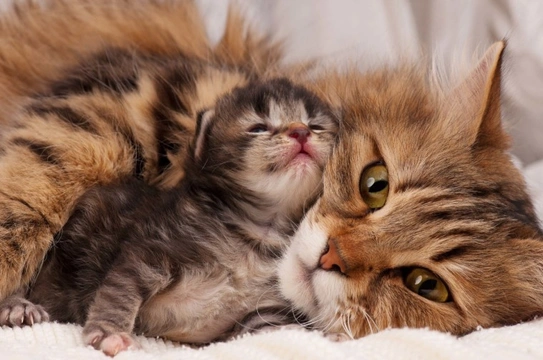
How old should kittens be before they leave their mother?
There is considerable debate over what age it is considered to be appropriate to separate a kitten from their mother, and allow them to go on to their new homes where they will live for the remainder of their lives. In the wild, kittens will usually stay with their mother until the mother becomes pregnant again, when she will naturally begin to push them away in preparation for raising her new litter. If the queen does not have any further litters, or lives as part of a colony of cats, the kittens will begin to gradually draw away as they reach sexual maturity, and set out in search of mates of their own. However, all of these processes can take several months to a year, and of course, when we deliberately breed kittens in a domestic situation, they will be separated from the queen well before this in order to allow them to go off to their new owners.
But at what age should this happen, and why? Read on to learn more.
Nutrition and basic needs
When the kittens are newborn and unable to fend for themselves, they rely upon their mother to fulfil all of their needs. Obviously this includes feeding, as the young kittens need to suckle in order to gain nutrition before they are old enough to eat solid foods, but there is much more to it as well!
The queen will keep her kittens safe and warm, protect them from predators, lick them and clean them, and lick their eyes to encourage them to open when the time is right. They also need assistance from the mother to defecate and urinate, as this requires manual stimulation until the kittens are a little older, so in reality of course, kittens are totally helpless at this stage and need to remain with their mother in the very first stages of their development.
Learning to be a cat
As the kittens get older, they will be able to see, able to go to the toilet without encouragement, and begin to move around. Once they are a few weeks old, the queen will begin to show them the food and water that she consumes, demonstrate eating from a bowl, and encourage the kittens to investigate and start to eat solid foods for themselves. They will also begin to teach them the fundamentals of being a cat, such as toileting away from their sources of food and water, keeping themselves clean, and how to stay safe. Kittens at this age should be well on the way to becoming familiar with people, well socialised, comfortable with being picked up and handled, and enjoying the company of humans.
The kittens will also be incredibly inquisitive at this age and will need plenty of toys to play with and other sources of amusement, and the queen will begin to teach them about hunting, and how to catch prey... even if the prey in question is a ball or a feather! Watching kittens stalk and pounce on their toys can of course be highly rewarding as well as hilarious to watch!
Socialisation
Another important factor that can only be properly learnt prior to leaving the queen is socialisation with other cats, in this case, their own littermates. These, and any other cats within the home, are the first cats that the kitten in question will meet, and while cats tend to be wary of strangers and rather solitary when they are adults in the wild, living with their littermates will teach them about social norms, acceptable behaviour, staying warm with a friend, and personal space!
Behaviour modification and weaning
As the kittens reach four to six weeks old, the queen will begin to wean them, and her milk supply will become more scarce as this happens. By six weeks old, kittens will almost always be eating only solid food, and not relying upon their mother’s milk for nutrition. The queen will also begin to correct the behaviour of her litter at this point, telling them off if they go too far or play too enthusiastically!
Eight weeks, twelve weeks, thirteen weeks?
People often assume that once a kitten is able to eat solid food at around six weeks of age, they are able to be weaned and go to their new homes. However, this is to be discouraged, as the kitten will only just have started to get used to the new status quo, and should not be removed from the dam until they have reached the juvenile, rather than the baby stage of development.
Eight weeks is a common point at which non-pedigree kittens are taken away from the queen, but again, this is far from ideal, as kittens still have a lot of learning to do and can benefit from spending this very valuable stage of their lives with their queen and littermates, as there are lessons that only they can teach! Also, kittens should receive their first vaccinations prior to leaving their birth home, something that cannot be achieved at eight weeks old.
Twelve to thirteen weeks of age is the time that is almost universally considered to be the optimum earliest time to remove kittens from their queen, and by this age the kittens should be ready to go out into the world and begin the next stage of their learning development. However, the Governing Council of the Cat Fancy (GCCF) recommends that thirteen to fourteen weeks is even better, particularly in the case of foreign breeds of cat that are not native to the UK.



